With a desire to produce clean and safe agricultural products, Nguyen Dinh Thiep and his coworkers decided to apply the agricultural production model of the Kawakami village in Japan and they were successful. Their agricultural products are now in demand by customers.
According to Nguyen Dinh Thiep, Director of Nhat Viet Vegetable and Fruit Joint-stock Company in Trung Nghia commune, Hung Yen, his company sent some staff to Kawakami village where they learnt clean farming methods and then applied the model to the company’s farm in Trung Nghia commune. The company also received supports from Japanese farmers in terms of technique, seeds and machines to facilitate the production process.
At present the company has a 2-hectare greenhouse system in Tinh Linh village, Trung Nghia commune. To have high-quality products, all processes are strictly controlled, such as preparing soil, selecting seeds and using organic fertilizer. During the cultivation process, no pesticides, herbicides and chemical fertilizers are used. Vegetables are covered with nylon netting to help increase the ability of plants to absorb nutrients and keep moist.
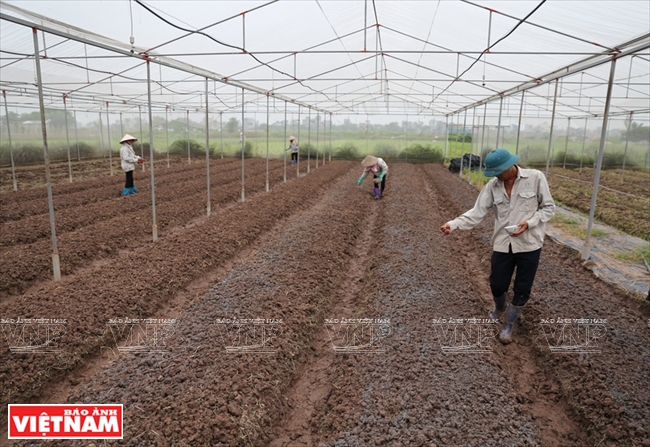
Organic fertilizer is used at the farm of Nhat Viet Vegetable and Fruit Joint-stock Company.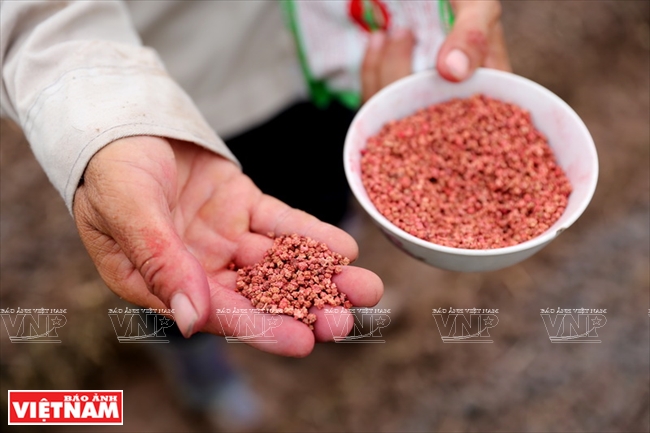
Brassica integrifolia seeds are planted at the farm of Nhat Viet Vegetable and Fruit Joint-stock Company.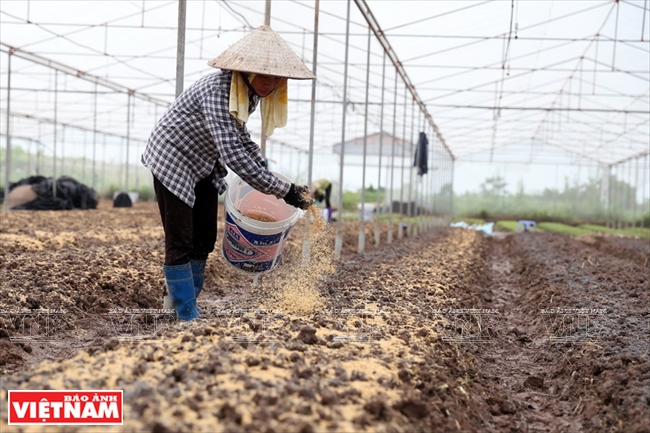
Rice husk is used to cover the surface of seed beds.
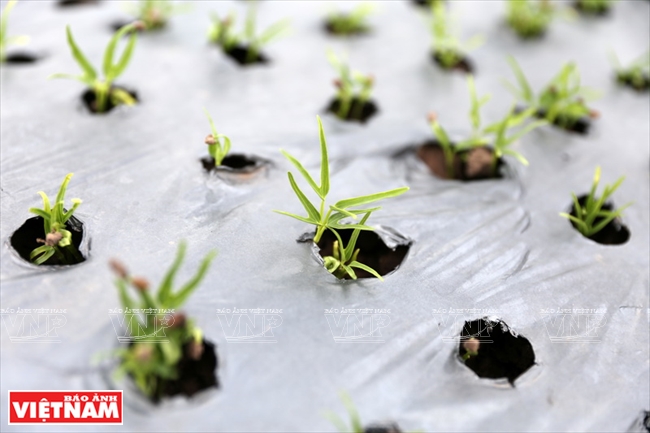
Vegetables are planted in beds which are covered by nylon nets to ensure the quality.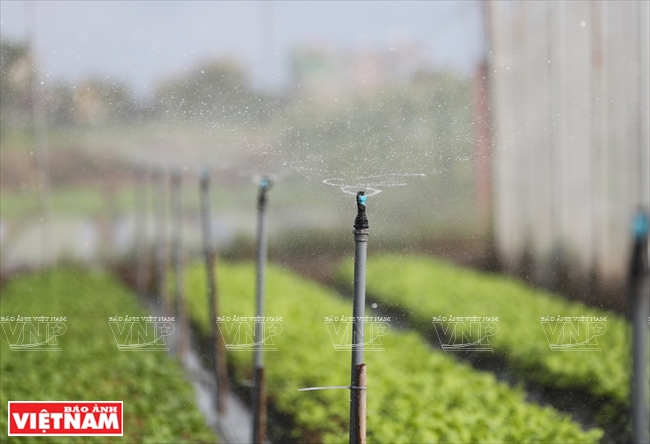
Fresh water is used at the farm of Nhat Viet Vegetable and Fruit Joint-stock Company.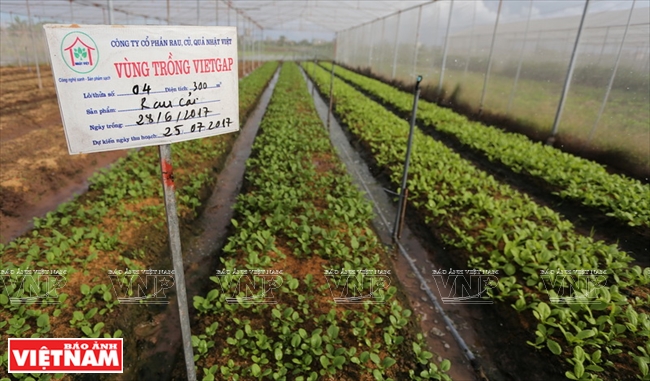
The company produces a total of 22 kinds of vegetables and fruit, meeting
VietGAP standards.
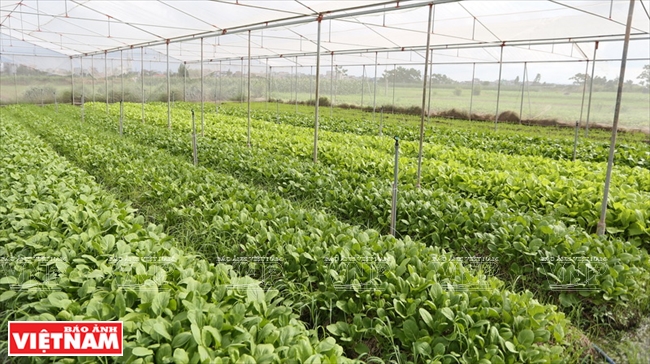
Brassica integrifolia is planted according to VietGap standards.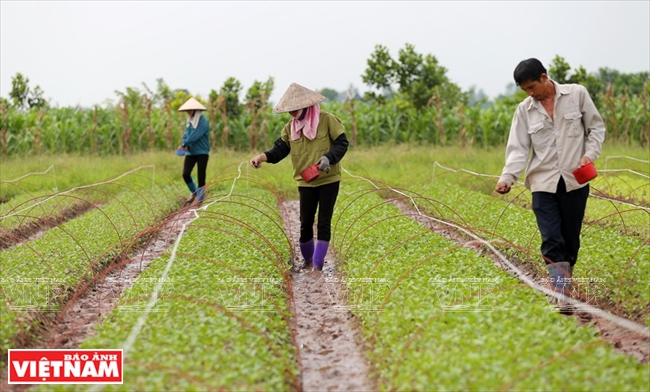
The company’s products ensure five cleanliness criteria according to Japanese agricultural standards,
including clean seeds, clean water, clean soil, clean cultivation and clean harvesting.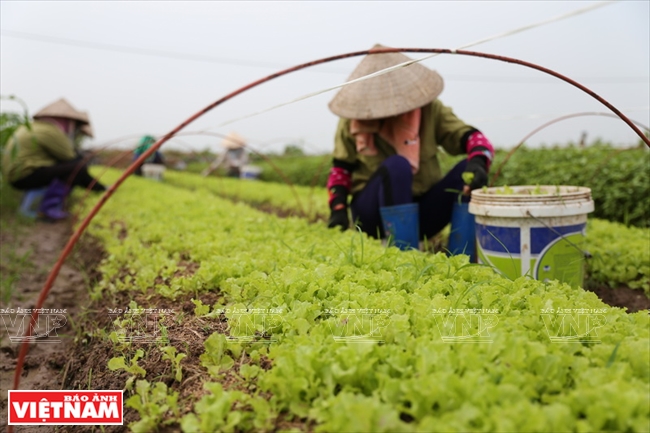
Apart from traditional Vietnamese vegetables, the company now cultivates other plant varieties from Japan,
such as lettuce, napa cabbage and cherry tomatoes.
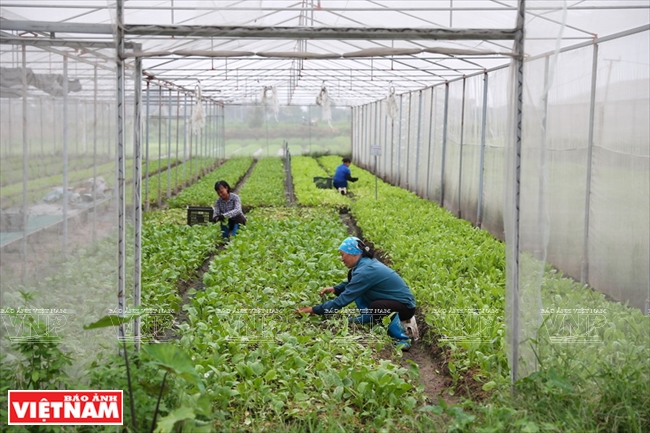
Vegetables are harvested on time.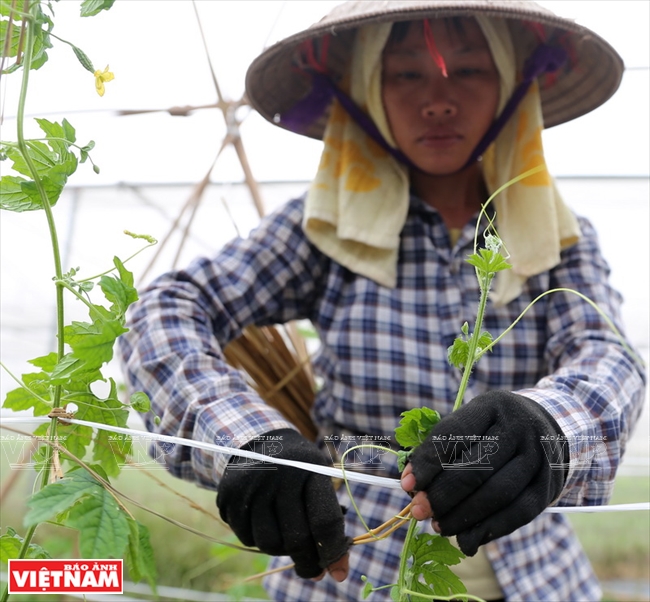
During the cultivation process, no pesticides, herbicides and chemical fertilizers are used.
Japanese experts help increase productivity at Nhat Viet Company. Photo: File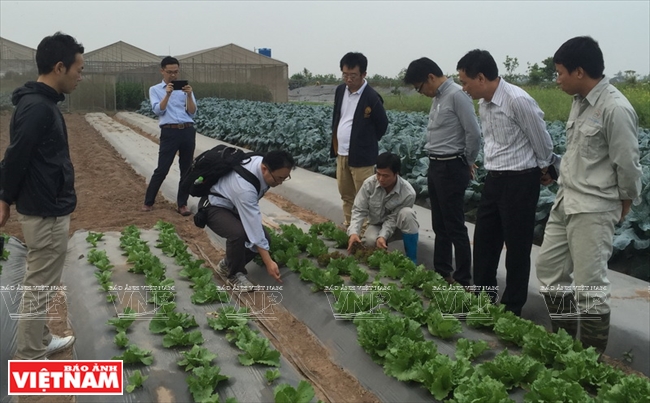
Japanese experts conduct a survey of the process of planting Japanese lettuce at the farm of
Nhat Viet Vegetable and Fruit Joint-stock Company. |
“The Japanese technology of growing vegetables is far different from that of Vietnam. Japanese farmers can grow 2-3 crops each time of preparing the soil and using fertilizer,” said Thiep. Therefore, the company’s products ensure five cleanliness criteria according to Japanese agricultural standards, including clean seeds, clean water, clean soil, clean cultivation and clean harvesting.
|
In 2016, the company harvested hundreds of tonnes of vegetables and fruit to provide for supermarkets and clean food stores in Hung Yen, Hanoi and neighbouring provinces with a total turnover of over 2 billion dong, earning a profit of 500 million dong. On average, a hectare of vegetables brings a profit of 250 million dong/ year. |
Apart from traditional Vietnamese vegetables, the company now cultivates other plant varieties from Japan, such as lettuce, napa cabbage and cherry tomatoes, increasing the total to 22 kinds of vegetables and fruit, meeting VietGAP standards.
The company has now signed contracts with many supermarkets and restaurants to provide clean and safe vegetables at the price of about 20,000-25,000 dong/kg, 1.5-2 times that of the same products.
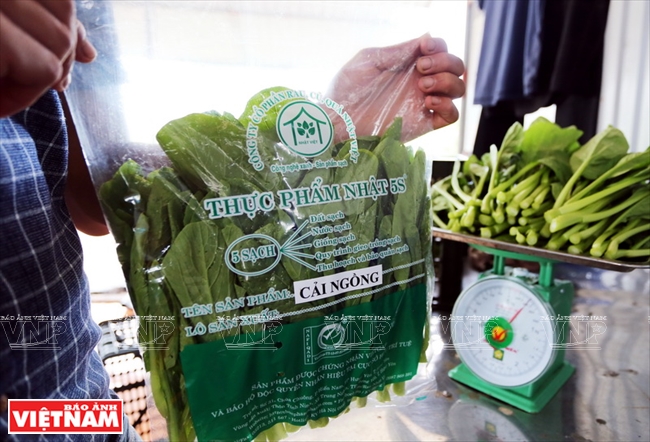
After harvesting, vegetables are cleaned and packed before shipping to supermarkets.
The company’s vegetables are always fresh.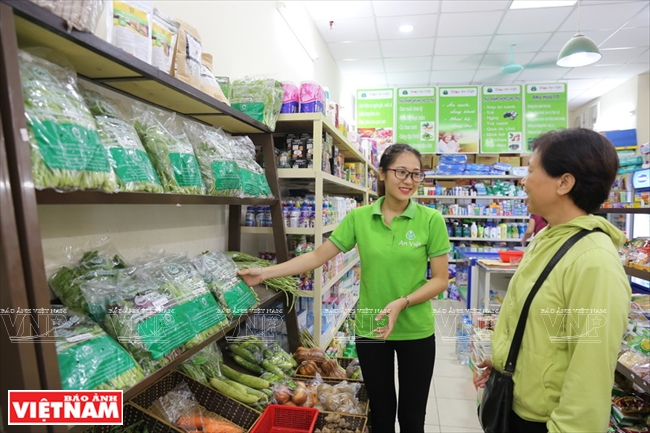
The company’s products are sold at many supermarkets and restaurants.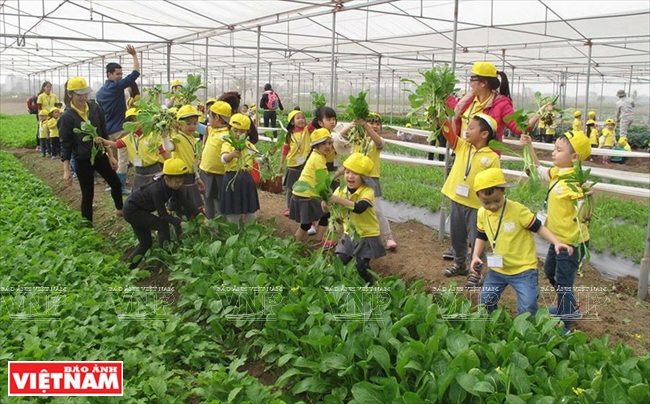
Kids visit the farm of Nhat Viet Vegetable and Fruit Joint-stock Company.
|
Story: Thuc Hien - Photos: Khanh Long & Files